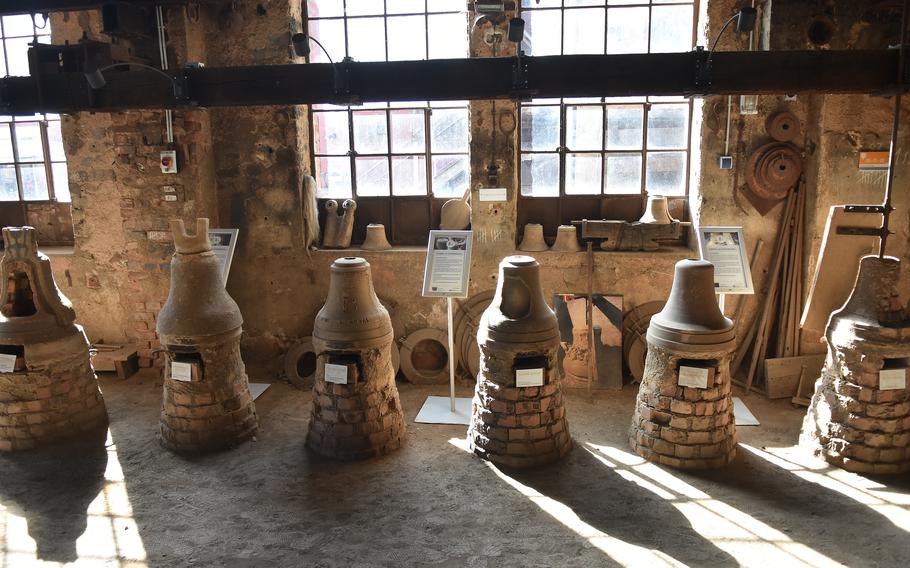
Visitors to the Museum of Bell Foundry Mabilon in Saarburg, Germany, can learn how bronze bells were cast in a workshop dating back nearly three centuries. Signs throughout the museum are in German, but an audio tour in English fills in all the details about the complex craft of bell-making. (Jennifer H. Svan/Stars and Stripes)
The sound of bells marks the passage of time and summons worshippers to church in many German villages, a reminder of a centuries-old tradition made possible by bell artisans.
Some of those bells still chiming today likely came from Saarburg, a hilly medieval town on the banks of the Saar River in the Mosel region. For more than 230 years, bronze bells were forged in a family factory that’s now the Museum of Bell Foundry Mabilon.
A stroll through the former foundry reveals the fascinating craftmanship that gives handmade bells their musical pitch and offers a glimpse into the history of bell-making.
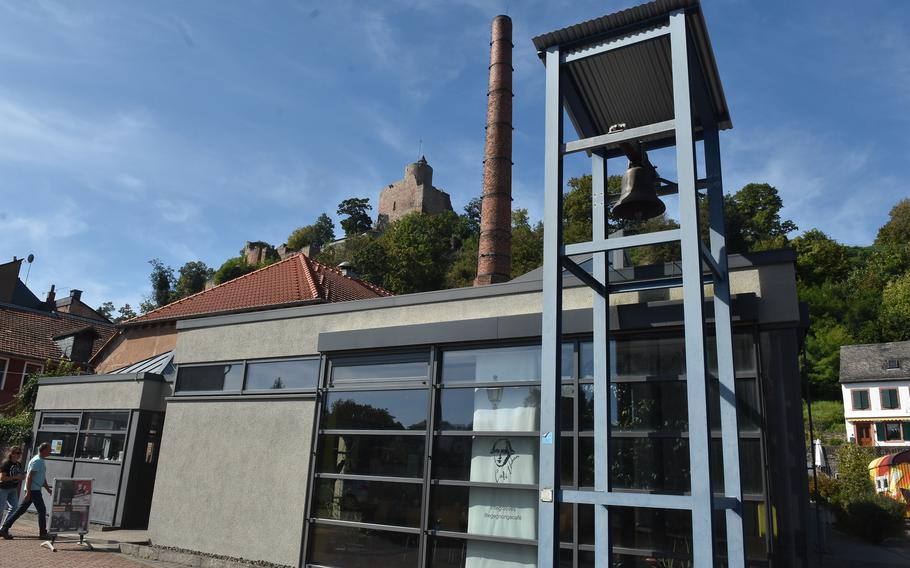
The Museum of Bell Foundry Mabilon in Saarburg, Germany, was built below Saarburg castle and near the old town. The museum offers a tour of the workshop, where bronze bells were designed and cast for more than 230 years. (Jennifer H. Svan/Stars and Stripes)
In 1770, Urbanus Mabilon settled in Saarburg and established the foundry. It closed in 2002 because the last bell master, Wolfgang Hausen-Mabilon, had no children to pass his family’s trade secrets on to, according to museum staff.
The city of Saarburg has owned the museum since 2008, painstakingly preserving the foundry’s workshops, tools and equipment, including the clay pit used to create bell molds and the furnace where metal was melted into liquid form.
The displays include a light and sound installation that simulates the casting process in the pit and the flow of hot bronze into the bell shapes, lending the museum the appearance of a working foundry.

Urbanus Mabilon started his bell foundry in 1770 outside the city walls in Saarburg, Germany. The workshop was preserved as a museum following its closure in 2002, giving about 10,000 visitors per year a glimpse at a centuries-old tradition of bell casting. (Jennifer H. Svan/Stars and Stripes)
The museum signage is in German, but a self-guided audio tour is available in English with a handheld device that plays a short recording at numbered stations throughout the museum.
The first exhibit on the tour features two hulking steel bells from post-World War II Germany. During the war, a shortage of bronze prompted the Nazis to seize many of the country’s bells to melt them into bullets and cannonballs.
After the war, some were replaced with steel bells. The two at the museum rang at Catholic parishes in the Mosel region from 1949 until 1975, when they were replaced with new bronze bells.
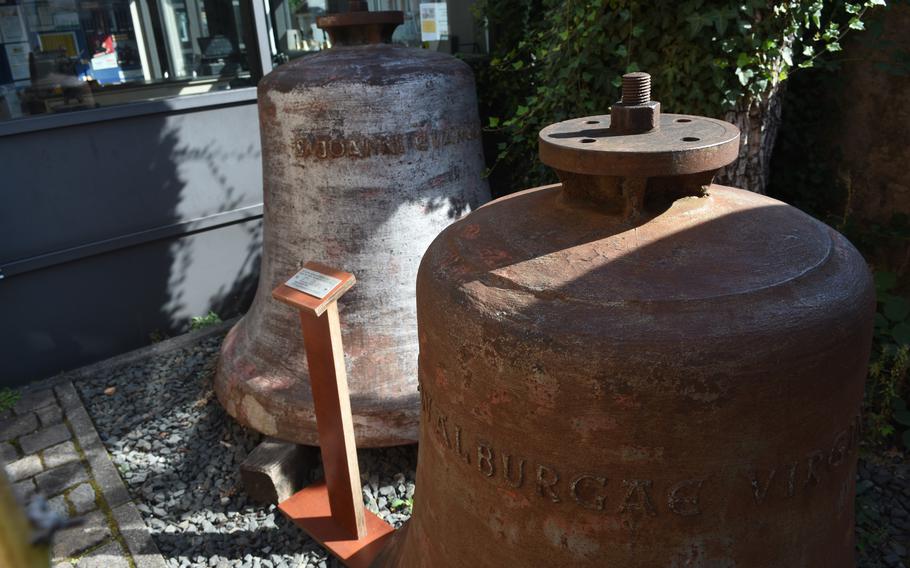
These steel bells displayed in the open courtyard of the Museum of Bell Foundry Mabilon replaced bronze bells that once rang in a Catholic church in the Mosel region. Many of Germany’s bronze bells were melted down for bullets and other ammunition during World War II. They were replaced with new bronze bells in 1975. The museum in Saarburg, Germany, preserves a bell workshop that produced bells for the world for almost three centuries. (Jennifer H. Svan/Stars and Stripes)
The museum also has a “sugar loaf” bell from the 12th century among its collection of older bells.
Though bells still provide a backdrop to daily life throughout Europe, the oldest ones date back to China in the 15th century B.C., one of many interesting historical facts presented at the museum.
Irish monks cast the first large bells and brought them to the European continent at the beginning of the 12th century.
Visitors can walk through the bell workshop, a brick building with tall windows that fills the room with natural light.
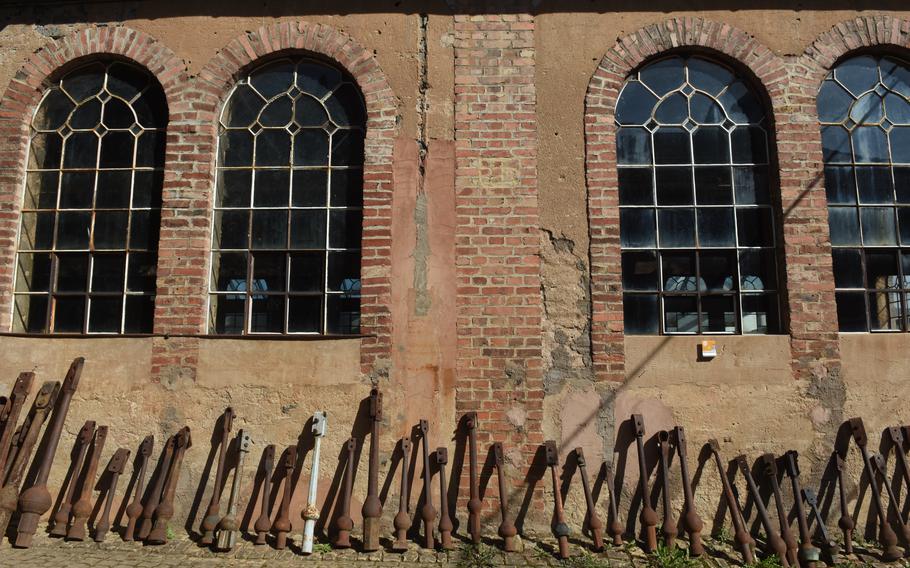
A row of old bell clappers is propped up along a wall in the courtyard of the Museum of Bell Foundry Mabilon in Saarburg, Germany. Some of the clappers show dents from years of use. The museum showcases a workshop that cast bronze bells for more than 230 years before it closed in 2002. (Jennifer H. Svan/Stars and Stripes)
Across a courtyard from the workshop is the former Mabilon family home and the drafting room, where precise clay molds were calculated for each bell, the inner and outer contours determining the harmonics.
Every bell is unique, both as a musical instrument and a work of art, and no master bell-maker will give away those secrets, museum visitors learn.
“Many a man tried to get me drunk so he could coax my secret out of me,” Urbanus Mabilon says in a dramatic voice reenactment in one audio tour recording.
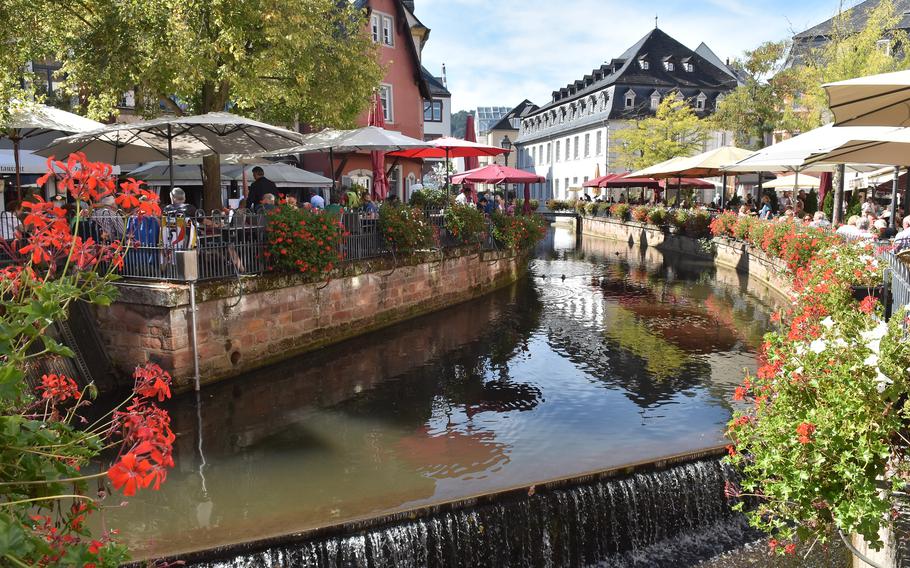
The Museum of Bell Foundry Mabilon in Saarburg, Germany, can be paired with a stop for ice cream or a glass of wine at one of the many cafes overlooking the Leukbach, a Saar River tributary that runs right through the old town. (Jennifer H. Svan/Stars and Stripes)
The museum isn’t the only attraction in Saarburg, though. Other sites worth visiting include the castle ruins on a clifftop above the museum and a chairlift that takes riders to a hilltop plateau with magnificent views of the Saar valley.
One of the most alluring parts of the 1,000-year-old city is its waterfall, where a Saar tributary called the Leukbach cascades about 60 feet down a rock face next to an old mill.
Above the waterfall, a pedestrian bridge links cafes and shops that flank the mirror-still water in an area known as Little Venice.
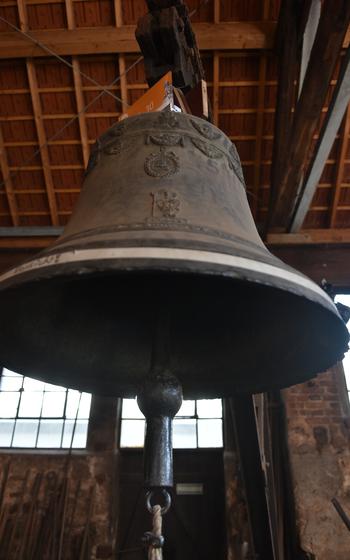
One of the many bells on display at the Museum of Bell Foundry Mabilon in Saarburg, Germany. Most bells carry an inscription, usually the name of the person who paid for the bell, and are often decorated with angels or saints and sometimes a motto or blessing. (Jennifer H. Svan/Stars and Stripes)
On the QT
Address: Staden 130, Saarburg, Germany
Times: Through Oct. 31, open Monday to Friday, 9 a.m. to 5 p.m. and Saturday and Sunday, 11 a.m. to 5 p.m. Closed on Saturdays from Nov. 1 to March 31.
Costs: Admission is 5 euros for adults, 2.50 euros for students, 12 euros for families with two adults and at least one child; children 6 and under are free. Handheld devices for English audio tour are free.
Information: Online: kulturgiesserei-saarburg.de; email: info@kulturgiesserei-saarburg; phone: +49 6581-2336